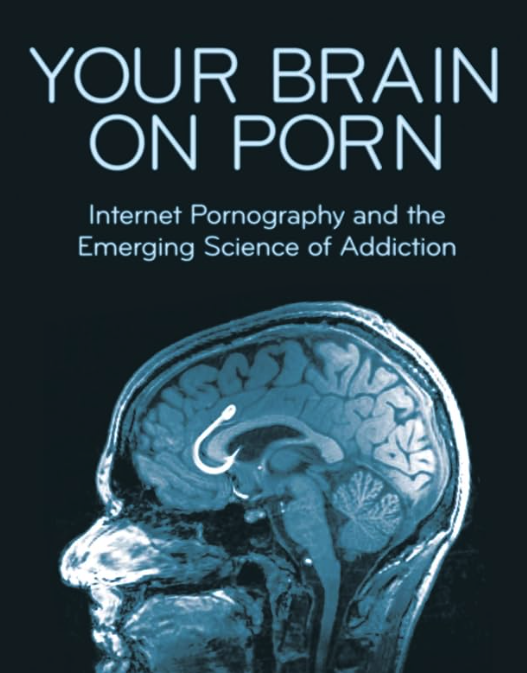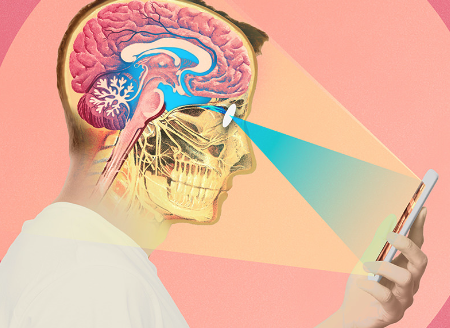Dopamine and the Reward System
One of the most immediate and concerning effects of pornography on the teenage brain is its impact on the brain’s reward system. Pornography, like other addictive behaviors, triggers a surge of dopamine, which provides a temporary feeling of pleasure. However, repeated exposure to such intense stimuli can alter the brain’s natural reward system.
A 2015 study published in JAMA Psychiatry found that individuals who frequently watched pornography had less gray matter volume in the striatum, a key part of the brain involved in reward processing and motivation. Over time, this desensitization can lead to a need for more extreme material to achieve the same level of arousal—a phenomenon seen in many forms of addiction. This poses significant concerns for teenagers whose brains are still developing their dopamine pathways, potentially making them more susceptible to compulsive behaviors.
Cognitive and Behavioral Changes
Beyond the neurological impact, pornography can distort a teenager’s understanding of relationships, intimacy, and consent. A study in Frontiers in Psychology (2020) revealed that frequent exposure to pornography can lead to unrealistic sexual expectations, objectification of partners, and a distorted view of healthy relationships. Adolescents may begin to associate intimacy solely with physical pleasure, neglecting emotional and interpersonal connections.

Moreover, another study from Psychological Medicine linked early exposure to pornography with higher rates of risky sexual behavior, including multiple partners and less frequent use of contraception. The normalization of these behaviors in pornography can skew adolescents’ understanding of consent, respect, and boundaries, potentially leading to harmful real-world interactions.
The Cognitive and Behavioral Impact of Video Games on the Teenage Brain
Cognitive Benefits and Risks
Video games, unlike pornography, can offer cognitive benefits when used in moderation. Action and strategy games, for example, have been shown to improve hand-eye coordination, spatial awareness, and problem-solving skills. A study published in Nature demonstrated that adolescents who played video games had enhanced attention and visual processing capabilities compared to non-gamers.
However, excessive gaming—particularly with violent or highly immersive games—can have detrimental effects. A 2021 study in Translational Psychiatry reported that teens who played violent video games for extended periods exhibited more aggressive thoughts and behaviors. These games often reward violent actions, which can lead to desensitization to real-world violence, reducing empathy for others.
Additionally, spending excessive time gaming can interfere with other aspects of development, such as academic performance, physical activity, and sleep. A study in Pediatrics found that teenagers who played video games for more than three hours a day were more likely to suffer from attention problems in school and experience disrupted sleep patterns.

The Impact on Brain Development and Impulse Control
The immersive nature of video games can significantly impact the teenage brain’s development of impulse control. Games are designed to offer immediate rewards—whether it’s unlocking new levels, earning points, or gaining virtual prestige. This constant stream of instant gratification reinforces impulsivity and can undermine the development of long-term focus and self-regulation.
A Journal of Youth and Adolescence study found that excessive gaming could impair the development of the prefrontal cortex, the brain’s control center for executive functions like decision-making, problem-solving, and delayed gratification. This has real-world consequences: teenagers may find it harder to resist temptations, manage their emotions, or maintain focus on long-term goals, such as academic success.
Social and Emotional Consequences: Isolation and Escapism
Emotional Disconnect from Reality
Both pornography and video games can contribute to emotional disconnection from real-life relationships. Pornography promotes a narrow, often exploitative view of sexual intimacy, while video games—especially when played excessively—can serve as an escape from real-world responsibilities or social interaction.
The emotional isolation linked to both activities can make teenagers less adept at managing real-life emotional challenges, such as stress, anxiety, or interpersonal conflict. According to a 2019 study in Computers in Human Behavior, teenagers who spent excessive time in virtual worlds—whether in video games or consuming online adult content—were more likely to report feelings of loneliness and social isolation.
Long-Term Risks: Addiction, Mental Health, and Academic Decline
Pornography Addiction
While not officially classified in the DSM-5, pornography addiction shares many characteristics with substance addictions. Repeated exposure can lead to tolerance, withdrawal symptoms, and continued use despite negative consequences. For teenagers, who may already be struggling with identity formation, the compulsive nature of pornography can become an escape mechanism for dealing with stress or emotional discomfort.
A study in Sexual Addiction & Compulsivity found that young men who frequently consumed pornography were more likely to report symptoms of anxiety, depression, and sexual dysfunction. These mental health issues can, in turn, impact their academic performance, social relationships, and overall well-being.
Video Game Addiction
Similarly, excessive gaming has been classified as an official disorder by the World Health Organization (WHO) in 2019. Known as “gaming disorder,” this condition is characterized by impaired control over gaming, leading to significant impairment in personal, social, and academic areas of life.
Research from the American Journal of Psychiatry indicated that 8-10% of young people may meet the criteria for gaming disorder, with symptoms including withdrawal, loss of interest in other activities, and continued gaming despite harm. In extreme cases, this can lead to poor academic performance, reduced physical activity, and even serious mental health challenges like anxiety and depression.
What Can Be Done: Guidance for Parents and Educators
Open Conversations and Education
One of the most effective ways to mitigate the harmful effects of pornography and video games is through open, judgment-free conversations. Teenagers should be encouraged to think critically about the media they consume. Discussing the unrealistic portrayals in pornography and the potential consequences of excessive gaming can help teens develop a healthier relationship with these forms of media.
Setting Boundaries and Encouraging Balance
Setting limits on screen time is another crucial step. The American Academy of Pediatrics recommends no more than two hours of recreational screen time per day for teenagers, encouraging them to engage in physical activities, social interactions, and other enriching experiences. Parents should model healthy behavior by demonstrating balanced media use themselves.
Additionally, encouraging teens to engage in extracurricular activities that promote social and emotional growth—such as sports, arts, or volunteer work—can provide a healthier outlet for stress and creativity, reducing the appeal of excessive gaming or pornography consumption.
Conclusion
The teenage brain is highly malleable, and the impact of pornography and video games can have long-lasting consequences. While both can offer short-term pleasure or distraction, they also risk rewiring the brain’s reward system, impairing emotional development, and fostering unhealthy behaviors. By fostering open dialogue, setting healthy limits, and providing alternative ways to engage their interests, parents and educators can help guide teenagers toward healthier, more balanced digital consumption.
Further reading here.